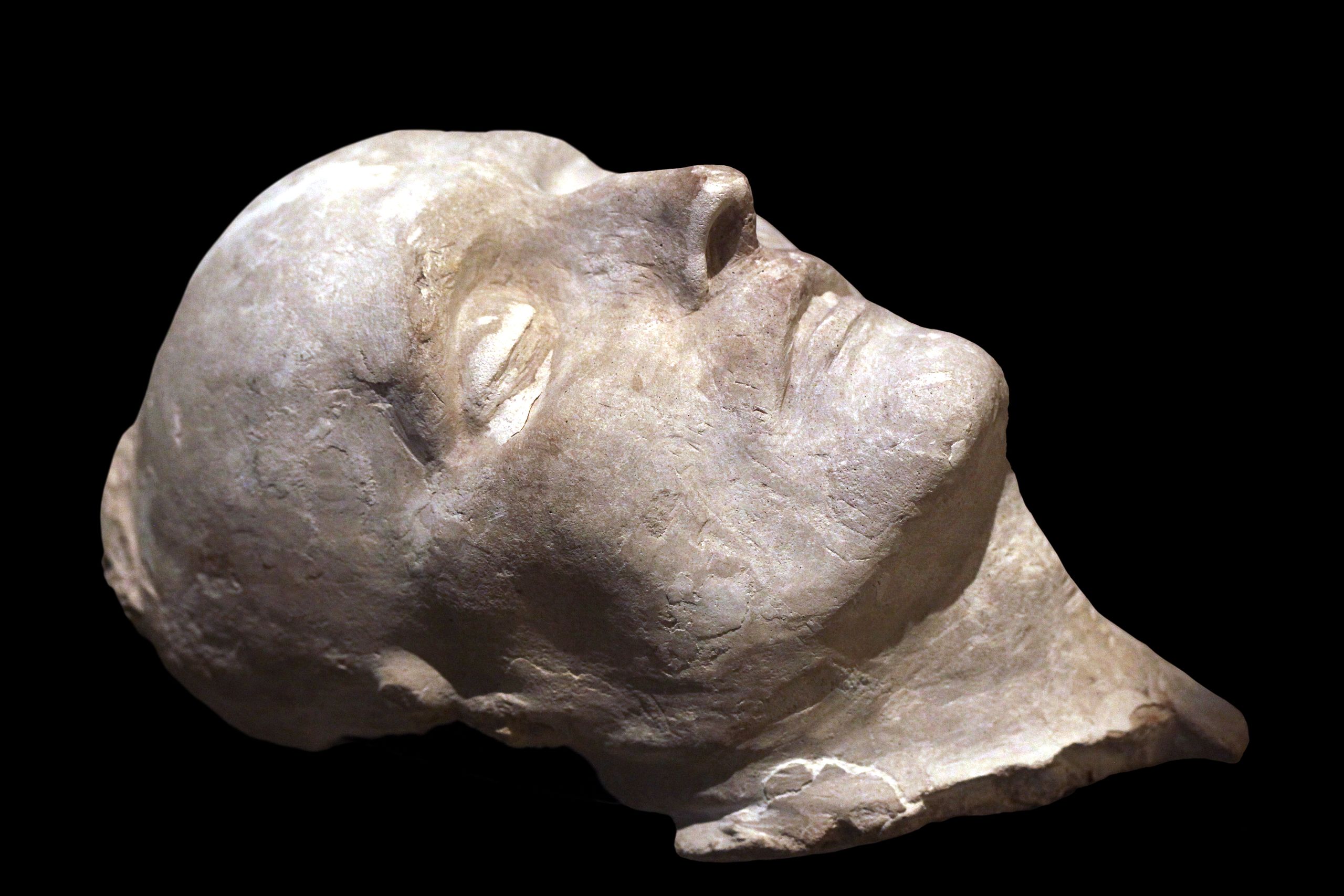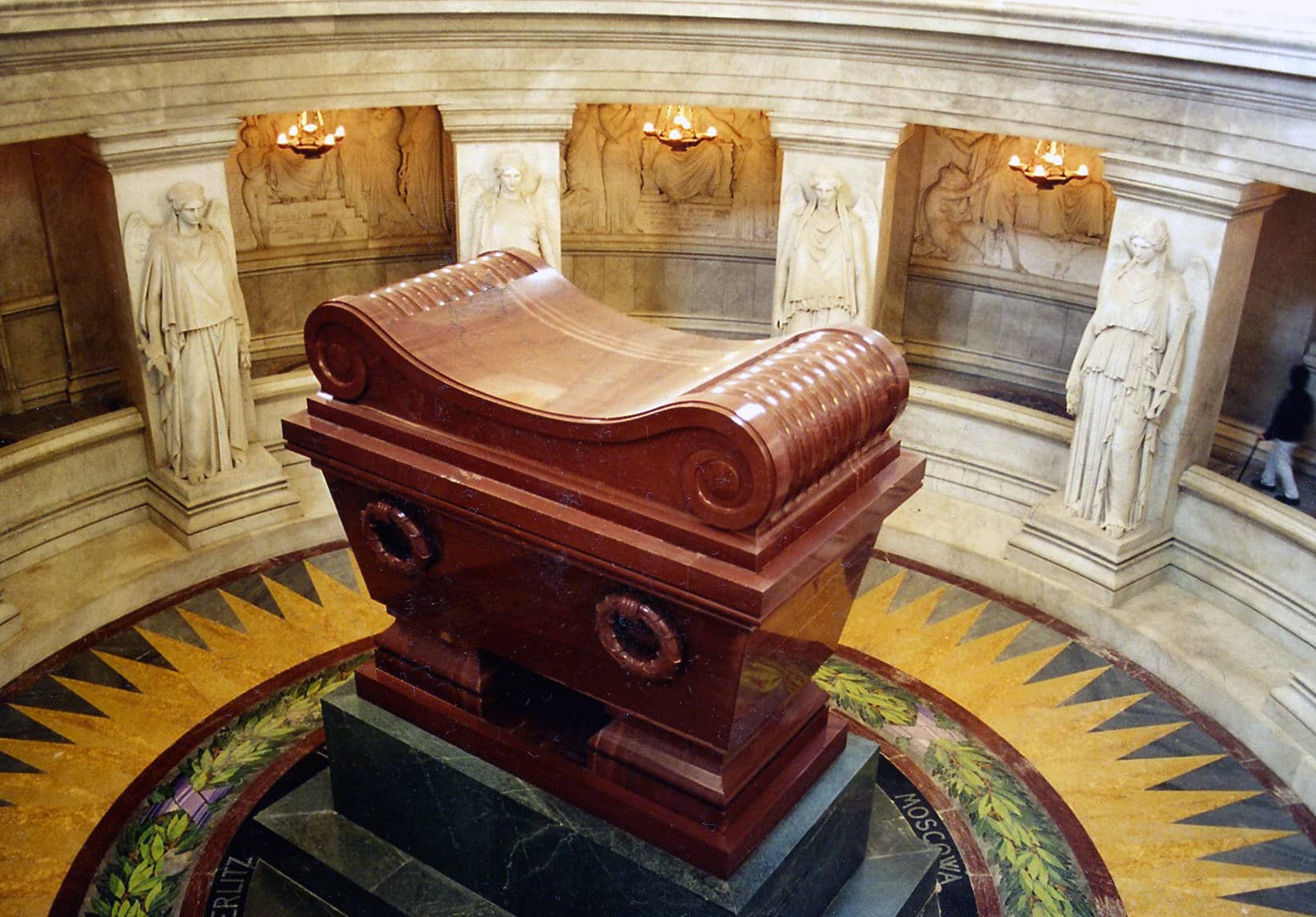When Napoleon died at St. Helena, the question of the causes of his death soon became a subject of debate. Cancer? Poison? These only evocations excite passions, because Bonaparte passed master in the art - beyond his death - to feed his own legend. Who would not try to imagine a romantic ending at the height of this extraordinary character?
Napoleon Bonaparte dies in St. Helena
On May 5th, 1821 at 5:49 pm, he died at the age of 51, the man who dominated most of Europe for a time. Arousing as much admiration, fear as hatred (the great authors such as Tolstoï, Germaine de Stael or Chateaubriand left us with strong memories), the exiled Emperor dies, however, after long suffering in his home in Longwood without even leaving a good word for posterity (his last words were confused and unintelligible).
Since March, Napoleon was bedridden and was less and less supportive of food, weakening rapidly. Persuaded for a long time that the evil that took away his father (a stomach cancer) would eventually defeat himself, he refused in the last month before his death most of the medications prescribed by his doctors. Nevertheless, the latter decided on May 4th to override the clear will of Napoleon I, agreeing with very poor common sense on the administration of a dose of calomel diluted in a glass of water. Only Dr. François Antommarchi (1780/89 – 1838) fiercely opposed it without winning any success. Louis-Joseph-Narcisse Marchand (1791 – 1876), faithful companion of the emperor, was charged with giving the secret remedy, mission which he acquitted painfully when Bonaparte, having drunk the contents of the glass said to him “with a tone of so affectionate reproach […]: “Are you misleading on me too?” Marchand, deeply moved, was indeed failing in his promise not to administer anything to him without his permission. The calomel certainly had an effect but probably not what we expected and so that May 5th late afternoon, Napoleon gave his last breathe. When midnight was over, the body was moved, then washed to purify it with the cologne that so he loved mixed with a little water from the Torbett Fountain.
Although the last will of the emperor was to be buried in France, the British government strongly opposed it through the governor of the island who however left free the relatives of the deceased to choose a place of burial at St. Helena.
Napoleon had discovered the Torbett fountain a few years before in the company of Henri-Gatien Bertrand (1773 – 1884) and recommended that: “if after [his] death, [his] body remains in the hands of [his] enemies, [they] should drop him off here.” The place thus imposed itself. The upholsterer Andrew Darling, who supervised the making of the coffins notes that he was told that “the coffins were to be the first in tinplate, upholstered in cotton-padded satin, with a little mattress and pillow in the back made of the same materials; the second of wood; the third lead; and finally a casket of mahogany covered with purple velvet, if it could be obtained.” Mahogany being a rare wood on the island, a table of this essence was sacrificed for the making of the last coffin.
After the autopsy of Napoleon, the heart and the stomach were placed in two vases of silver, filled with spirit of wine. These vases were hermetically sealed and placed in the coffin. The successive coffins were sealed in the same way. A lot of precautions were taken to make the tomb of Napoleon an impregnable fortress (one sank the cement in the pit before laying three heavy slabs and a gate of cast iron). The stele, however, remained silent since – without being a surprise – the English and French never agreed on the inscription, which would indicate the identity of the deceased as accurately as possible; each nation having a very firm idea of what it meant by “accurately”.
Napoleon prepares his legend
Long before he died, and even when he was at St. Helena, the emperor remained a fierce opponent of the English. The decision to isolate him in the middle of the Atlantic was therefore the least they can do and surely the British were not surprised to see the rare talent that Napoleon deployed to systematically undermine their authority. Emmanuel Las Cases (1766 – 1842) testifies in his memoirs of the treasures of inventiveness deployed by Bonaparte to give Europe the image of a dishonorable captivity, making the English revolting characters and completely devoid of humanity. Yet the reality was quite different and Napoleon was treated well despite some financial questions and etiquette that often put Bonaparte in a rage (the English in charge of his surveillance opposed him with consistency and determination the title of “general” when Bonaparte required that of “emperor” which he considered legitimate). Thus, our Corsican made for example sell his silverware on the place of Jamestown to make believe that he was at the last levels of poverty. The merchants returning from the Indies were, without them’s knowing, to play the role of gossips in Europe and to spread the infamous news. Jean Tulard, historian and specialist of Napoleon I, also recalls that Napoleon gave “an odious role to Hudson Lowe (1769 – 1844), who by the way, was not a monster of finesse”. While before embarking on Île d’Aix in July 1815, Napoleon I had refused several plans for escape, “it was better for his legend that he died, as he will say, murdered by the British government” recalls Pierre Branda, a French historian specializing in the Consulate and the First Empire.
What is Napoleon Bonaparte dead?
Unless one desecrates the tomb of the Invalides, will we ever know it with certainty? Nevertheless, the many accounts of his relatives and witnesses of his burial and his, to say the least, confrontational relations with his phlegmatic British jailers further guide the trail of the investigation to a death of pathological cause than to that of a perfidious poisoning. Of course, this last theory has something to seduce! Can a historical figure of this stature die stupidly from a failing stomach? It would seem, however, that we had to live with it.
Some people brandish the traces of arsenic detected in his hair but it is quickly forgotten that they were also found in those of Josephine and l’Aiglon. It is also unaware that in the 19th century arsenic was widespread in a role other than poison, so much so that it was often stored in the kitchen (and sometimes served as an unfortunate or criminal ingredient of an an undesirable gastronomy). It was used to make candles, cigarettes, tapestry pigments, dyes, paints and cosmetics. Many locks of hair of the imperial head were studied. It is almost systematically concluded that the doses were certainly high, but not for the 19th century. On the other hand, since the hair roots showed traces of arsenic, some people argued that this was proof that Napoleon had ingested the poison by food or wine. It had first been necessary for the poisoner to be a close relative of the emperor and to show extreme patience, for the man would certainly not die struck down by so small doses of arsenic, unless one envisages long-term poisoning. Unfortunately, the “French service” at the Longwood table (the dishes are presented on the table, people help themselves to dishes), it was necessary that the criminal also poisoned! As Jean Tulard slyly summarizes, either the poisoner was not good at it, or he still took a long time to kill him.
What about the body that was found almost intact in 1840 before his repatriation to the Invalides?
Arsenic, as well as an embalming, is famous for keeping the bodies in good condition. Once again, let us remember that Napoleon was buried, not in one, but in four hermetically sealed coffins. Most likely, a phenomenon of saponification (transformation of the flesh into adipocere) was favored by the absence of air and in this type of case, the good preservation of a body is quite often noted. Would one then enjoy to exchange the body of the sovereign by another less prestigious and bury in the Invalides a cook rather than an emperor? Again, there is no reason to believe this since the exhumation took place in the presence of many witnesses who had seen the imperial body 20 years ago. No one found fault with this, and, having passed the surprise of this astonishing preservation, they easily recognized the famous Napoleon.
Do you like this article?
Like Bonaparte, you do not want to be disturbed for no reason. Our newsletter will be discreet, while allowing you to discover stories and anecdotes sometimes little known to the general public.
Congratulations!
You are now registered to our Newsletter.
The question of the death of Napoleon I now unleashes the passions and testifies far less to the interest aroused by the emperor than his incredible talent for communicating, he who well before his death, was fully aware of the exceptional nature of his destiny. « My life, What a novel! » He said, dictating his memories to Las Cases during his exile in St. Helena. He could not have been more right: what better novels than those whose end maintains the mystery?
Marielle Brie de Lagerac
Marielle Brie est historienne de l’art pour le marché de l’art et de l’antiquité et auteur du blog « Objets d’Art & d'Histoire ».


